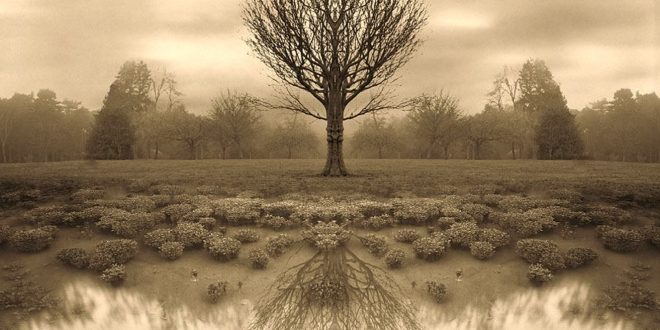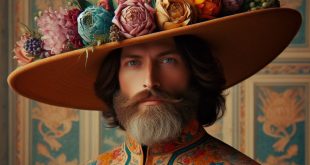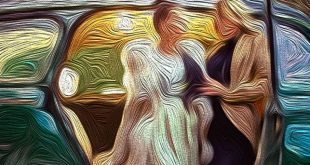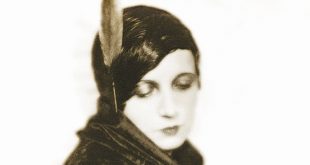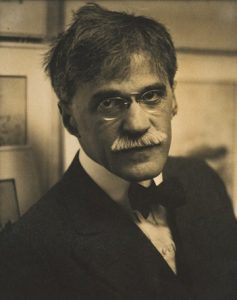 Gallery 291, a reference point for modern art
Gallery 291, a reference point for modern art
His photographs were tools for exploring its expressive potential in relation to the other arts. In Europe he has the opportunity to get in touch with the debates that animated the photographic circles. Back in New York he creates the magazine American Amateur Photographer. From 1902 he opened his first galleries, hosting photographers influenced by European pictorialism. Promoting meetings between Americans who practice or are interested in art, through the determination of him Alfred Stieglitz https://www.vam.ac.uk/articles/alfred-stieglitz-pioneer-of-modern-photography#slideshow=4285889&slide=0 contributes to the advancement of photography as a pictorial expression. His path towards freedom of artistic expression transforms photographers from reproducers to authors. The photography in his Camera Work magazine captures the rapidly growing modern world. In 1905, he rented a studio on 291 Fifth Avenue, where the gallery would become known as Gallery 291, a reference point for modern art.
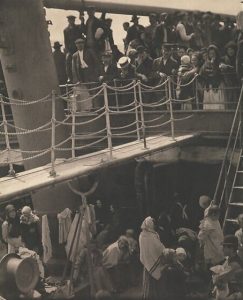
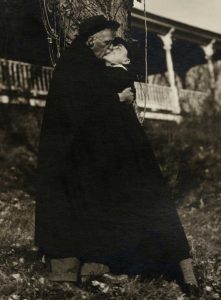 When he first started using a camera, photography was seen as a tool and used to describe and record. He has championed emerging artists, and as Editor of the American Amateur Photographer helped found the Photo-Secession association. He has exhibited the work of recognized and emerging photographers, as well as works by Impressionists, Cubists and Futurists. His work greatly influenced the development of photographic art. His creative curiosity has been involved in promoting photography, painting and sculpture. New York City was a frequent subject of his photographs. A pioneer of art nouveau pictorialism, he artistically represented the city by photographing everything from portraits to abstract clouds. Photographer, publicist and gallery owner, Alfred Stieglitz https://www.metmuseum.org/toah/hd/stgp/hd_stgp.htm promoted photography as an art. Born in 1864 in Hoboken (New Jersey), he even pushed his creative vein to capture his wife’s aging over time by capturing the details of her body. Sostenendo il posto della fotografia tra le altre arti, ha fatto in modo che la sua attività come editore e gallerista fosse parallela a quella del suo lavoro fotografico. Nelle sue gallerie ha introdotto l’avanguardia europea e promosso una nuova generazione di pittori americani.
When he first started using a camera, photography was seen as a tool and used to describe and record. He has championed emerging artists, and as Editor of the American Amateur Photographer helped found the Photo-Secession association. He has exhibited the work of recognized and emerging photographers, as well as works by Impressionists, Cubists and Futurists. His work greatly influenced the development of photographic art. His creative curiosity has been involved in promoting photography, painting and sculpture. New York City was a frequent subject of his photographs. A pioneer of art nouveau pictorialism, he artistically represented the city by photographing everything from portraits to abstract clouds. Photographer, publicist and gallery owner, Alfred Stieglitz https://www.metmuseum.org/toah/hd/stgp/hd_stgp.htm promoted photography as an art. Born in 1864 in Hoboken (New Jersey), he even pushed his creative vein to capture his wife’s aging over time by capturing the details of her body. Sostenendo il posto della fotografia tra le altre arti, ha fatto in modo che la sua attività come editore e gallerista fosse parallela a quella del suo lavoro fotografico. Nelle sue gallerie ha introdotto l’avanguardia europea e promosso una nuova generazione di pittori americani.
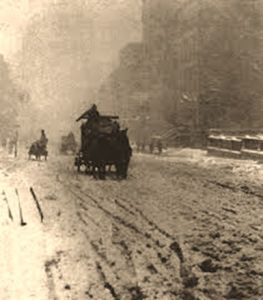 Thanks to his efforts, when ill health forced him to give up photography in 1937, the public’s perception of it had changed. He edited Camera Work publication and organized exhibitions to support photographers and other artists. Through compositional choices and natural elements such as rain and steam, he created platinum prints that had nothing to envy to painting. He believed in the aesthetic potential of any photo and advocated the use of laborious techniques in making photographic prints. Trained as an engineer, Alfred Stieglitz https://www.moma.org/artists/5664 wanted to demonstrate that photography was able to compete with painting, painting and sculpture. His knowledge of the pictorial art of Rodin, Picasso and Picabia is expressed in his photographs through the arrangement of shapes and tones. Towards the end of his career, he revisited the previous negatives reinterpreting them with the sharp and cold tones of silver gelatin contact prints. Few people exerted such a great influence on 20th century American art and culture. He began photography in the 1880s while a student in Berlin, where he studied with the photo chemist Hermann Wilhelm Vogel. In the United States he began to argue that photography should be treated as an art.
Thanks to his efforts, when ill health forced him to give up photography in 1937, the public’s perception of it had changed. He edited Camera Work publication and organized exhibitions to support photographers and other artists. Through compositional choices and natural elements such as rain and steam, he created platinum prints that had nothing to envy to painting. He believed in the aesthetic potential of any photo and advocated the use of laborious techniques in making photographic prints. Trained as an engineer, Alfred Stieglitz https://www.moma.org/artists/5664 wanted to demonstrate that photography was able to compete with painting, painting and sculpture. His knowledge of the pictorial art of Rodin, Picasso and Picabia is expressed in his photographs through the arrangement of shapes and tones. Towards the end of his career, he revisited the previous negatives reinterpreting them with the sharp and cold tones of silver gelatin contact prints. Few people exerted such a great influence on 20th century American art and culture. He began photography in the 1880s while a student in Berlin, where he studied with the photo chemist Hermann Wilhelm Vogel. In the United States he began to argue that photography should be treated as an art.
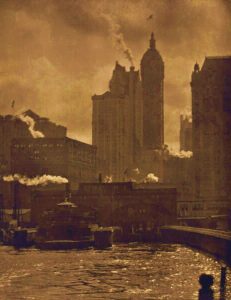
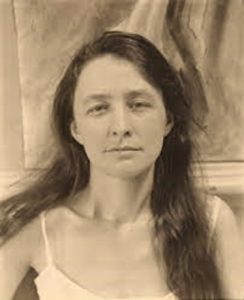 Starting in 1910 he moved away from the pictorial approach of the pictorialisms, moving towards a more direct representation with the use of platinum photographic papers. The first photographs of him served as an argument for skillfully making extremely picturesque scenes. A pictorial photographer, he elevated the practice of photography by linking its potential for expression with that of painting. Through his photographic work, the magazines he edited, and the exhibitions he staged in New York, Alfred Stieglitz https://archive.artic.edu/stieglitz/ incorporated photographic creativity into modern art. He understood the potential inherent in pointing his camera at the streets and buildings of New York, printing images that emphasize the atmospheric effects. In his work he thought in metaphors, depicting the skyscrapers of New or the dying cottonwoods on his family estate. Arguing that photography was akin to music, starting in 1922 he created the Equivalents series, abstract photographs with clouds on them. Marking a new form of photographic description, in his portraits he probed new psychological depths. By championing the place of photography among the other arts, he ensured that his activity as a publisher and gallery owner paralleled that of his photographic work. In his galleries he introduced the European avant-garde and fostered a new generation of American painters. In 1937 he took his last photographs, and died in New York a few years later, in 1946. If you want to know already published photographic stories, you can type https://meetingbenches.com/category/photography/. The intellectual properties of the images that appear on this blog correspond to their authors. The sole purpose of this site is to spread the knowledge of these creatives, allowing others to appreciate the works.
Starting in 1910 he moved away from the pictorial approach of the pictorialisms, moving towards a more direct representation with the use of platinum photographic papers. The first photographs of him served as an argument for skillfully making extremely picturesque scenes. A pictorial photographer, he elevated the practice of photography by linking its potential for expression with that of painting. Through his photographic work, the magazines he edited, and the exhibitions he staged in New York, Alfred Stieglitz https://archive.artic.edu/stieglitz/ incorporated photographic creativity into modern art. He understood the potential inherent in pointing his camera at the streets and buildings of New York, printing images that emphasize the atmospheric effects. In his work he thought in metaphors, depicting the skyscrapers of New or the dying cottonwoods on his family estate. Arguing that photography was akin to music, starting in 1922 he created the Equivalents series, abstract photographs with clouds on them. Marking a new form of photographic description, in his portraits he probed new psychological depths. By championing the place of photography among the other arts, he ensured that his activity as a publisher and gallery owner paralleled that of his photographic work. In his galleries he introduced the European avant-garde and fostered a new generation of American painters. In 1937 he took his last photographs, and died in New York a few years later, in 1946. If you want to know already published photographic stories, you can type https://meetingbenches.com/category/photography/. The intellectual properties of the images that appear on this blog correspond to their authors. The sole purpose of this site is to spread the knowledge of these creatives, allowing others to appreciate the works.
 Meeting Benches World art in all forms
Meeting Benches World art in all forms
